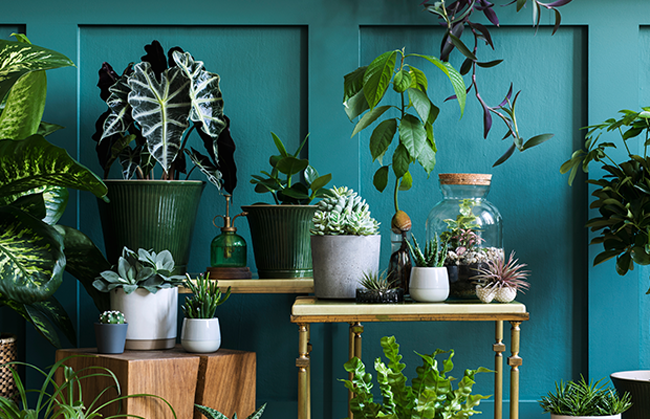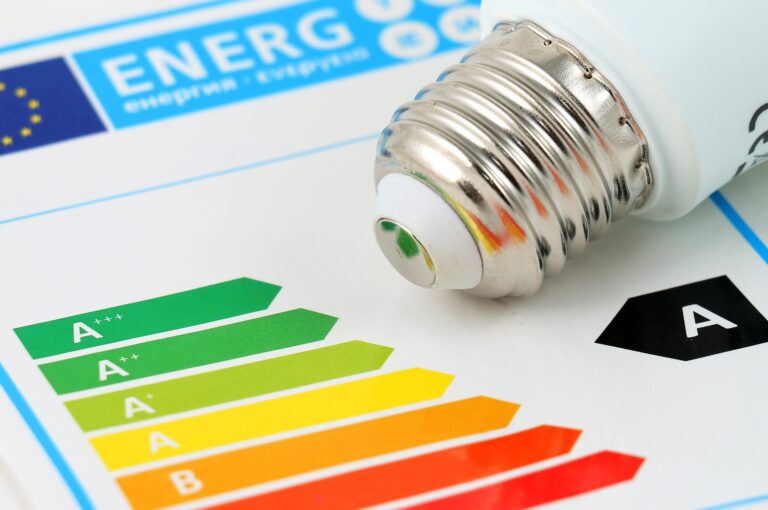House plants come with a huge number of benefits and are becoming increasingly popular.
In fact, it’s estimated the average Briton spends around £300 a year on house plants for their property.
If you’re a house plant beginner, though, it’s important to understand how to care for your plants, so they continue to thrive.
In this guide, we’ll explain everything you need to know about caring for your house plants.
How do you take care of indoor plants?
To take care of your indoor plants, you should:
- Give them the right amount of water
- Ensuring they’re getting enough light
- Make sure they’re kept clean
- Fertilise them
- Re-pot when needed
- Prune and deadhead
- Control pests
- Keep on top of and treat disease
Here’s how to carry out all the basic care needs your indoor plants will have…
1. How to re-pot a house plant
To re-pot your house plant:
- Water it the day before
- Remove the plant from its pot by turning the pot sideways, tapping the base and pulling it out from the base
- Gently tease the roots free
- Place a layer of fresh compost in the bottom of your new pot
- Place the plant on top of the compost, making sure the surface of the existing root ball is lower than the rim of the pot
- Place some fresh compost around the edges of the plant, without compacting too much
- Place another layer of fresh compost over the surface of the root ball, leaving enough space for watering
House plants should only be re-potted when they have outgrown their existing container.
If your plant’s roots are running around the inside of the pot in a circle, it’s a sign the plant requires a larger home.
2. How often do you water house plants?
So, how often should you water your house plants? That depends on the species of plant and its individual needs.
Generally, though, it’s best to water your house plants when they need water, rather than sticking to a set schedule – as this could result in overwatering.
If the top inch of soil your plant is potted in feels dry to the touch, it’s highly likely your plant needs a drink.
However, you should remember than plants like cacti need less water than flowering species.
And if you’re still unsure, it’s generally better to give your house plants too little water than too much.
3. Where to keep plants in the house
All house plants require different amounts of heat, cold, light, and shade.
So, keeping each plant in the right place in your home is crucial to their survival and growth.
Light is as important to a house plant as the right amount of water.
However, as is the case with watering, different house plants can require different amounts of light.
The best way to assess your house plant’s light requirements is to think about its natural habitat.
If it grows under a canopy in the wild, it probably requires more filtered light compared with a species that grows in the open.
If in doubt, speak to an expert at your local garden centre, who should be able to advise on your plant’s exact needs.
As well as lighting needs, some plants should also be placed in certain spots to bring good luck, according to superstition.
Money Plants, for example, should be kept in the south-eastern corner of a room so they can attract luck and prosperity.
4. Keep your house plants clean
Keeping your house plants clean from dust is important to stimulate growth.
While dust shouldn’t cause direct harm to your plants, it can mean it soaks up less light and grows slowly.
Gently wiping off dust that has settled on leaves will also improve the appearance of your plants.
5. Fertilise your house plants
How much fertiliser your house plants need, and how often, will depend on the species.
Too much fertiliser can cause growth problems and even burn roots and house plants should only be fed during their growing season.
An all-purpose, soluble plant food is usually the best option for most house plants.
6. Prune and deadhead
The best time to prune your house plants is after the growing season has finished.
Pruning can help stimulate further growth, but also prevents your plants from growing too large and keeps them looking neat and tidy.
Pruning and cutting back your house plants can also:
- Help to preserve plant health
- Help you to control the height and width of your plants
- Improve the quality of the stems and flowers
Flowering house plants require deadheading, usually before the growing season starts.
Using sharp scissors, cut away any faded flowers and brown, or withered leaves.
Make sure your scissors, or sheers, are clean to limit the potential spread of bacteria or disease.
How to spot problems with your house plants
If you’re a beginner when it comes to keeping house plants, it can be tricky to spot and understand the reasons why your plants are flourishing.
Human error or neglect are the most common reasons for house plants dying.
Mistakes made by beginners include:
- Watering a plant too much or not enough
- Too little, or not enough sunlight
- Over-fertilisation
Other reasons your plants are dying could include:
- Exposure to chemicals or herbicides
- Fungal diseases
- Pest infestation
Here are some common issues and how to spot them…
1. Why are the leaves turning brown on my indoor plant?
Reasons house plant leaves turn brown include:
- Too much sunlight, or too little
- Disease
- A lack of humidity
- Too much heat, or too much of a draught
- Over fertilisation
Brown leaf tips
If your house plant’s leaves are brown on the tips, this could be due to a lack of water.
The tips are the last part to receive moisture when it’s pulled up through the plant, so a lack of water can mean moisture never reaches the tips.
Brown patches or spots
Brown patches or spots on your house plant leaves could indicate a fungal disease.
Insects attack certain spots on the leaves, causing that specific area to die.
Completely brown leaves
If your plant’s leaves are completely brown, this could simply be down to age.
Leaves closer to the base of the plant are more likely to age quicker, so simply cut these away and continue to care for your plant.
2. Pests and indoor house plants
Unfortunately, like outdoor plants, house plants are susceptible to pests.
The most common house plant pests to look out for are:
- Thrips
- Spider mites
- Fungus gnat
- Mealybug
Thrips are hard to see with the naked eye, but leaves tend to turn silver with black spots.
Spider mites produce a fine webbing across the plant, while leaves may turn brown and fall off.
Fungus gnat are easier to spot being three to four millimetres in length and a brown colour.
Mealybugs, meanwhile, are white and fluffy and shaped like a woodlouse.
Most house plant pests require treatments to remove them, and your local garden centre will be able to advise on the best course of action.
3. Common house plant diseases
Many house plant diseases are caused by insects, so keeping these out of your home can go a long way towards protecting your plants.
Common house plant diseases to watch out for in the UK include:
- Powdery mildew
- Fungal leaf spots
- Root rot
If your plant is suffering with powdery mildew, you’ll see powdery white spots on its leaves, while fungal leaf spots can produce yellow, brown, or black spots.
Root rot, caused by overwatering, will make your house plant’s roots go dark and turn soft.
Further reading…
The ultimate guide to house plant care




